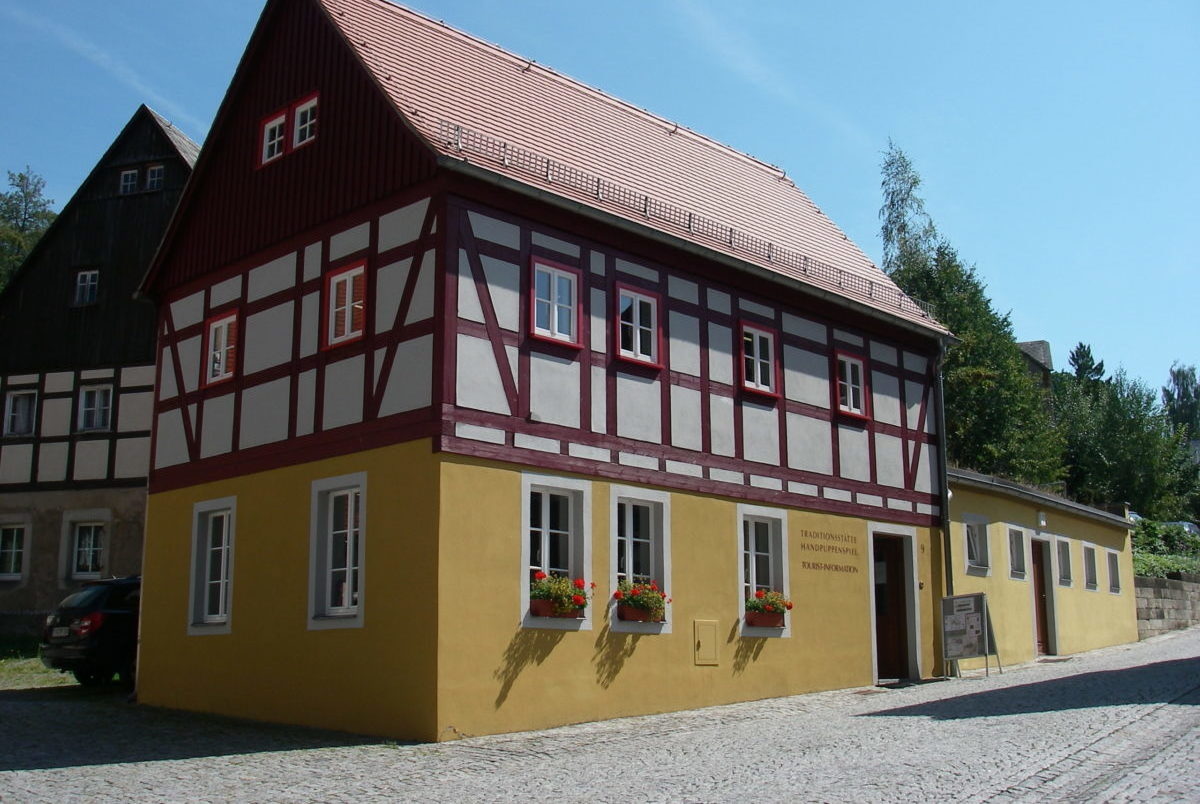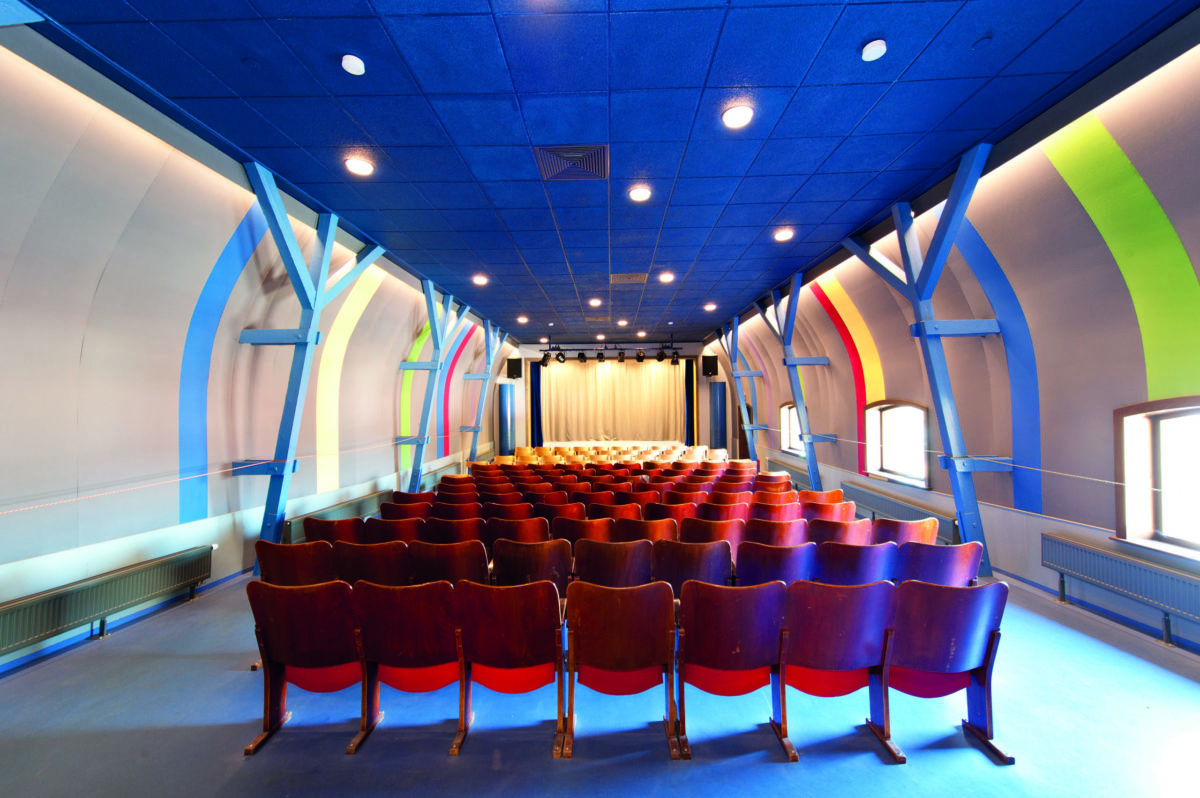Hohnstein punch
Tri – Tra – Trullala
Are you all there? Did you recognize me?
Exactly, that’s me, the Hohnsteiner Kasper. You can’t tell that I’m already 93 years old, can you? I was born in 1928 in Hohnstein in Saxony, when my Master Max Jacob (1888-1967) moved from Hartenstein in the Ore Mountains to the castle in Hohnstein. From then on we called ourselves “Die Hohnsteiner” – and I as the main character became Hohnsteiner Kasper . Our journey around the world began from Hohnstein.
In the 20s and 30s everyone in Hohnstein knew our troop. In addition to the master, other players soon took part. They had learned puppetry in workshops with Max Jacob. In our small business enterprise there was the carver Theo Eggink (1901-1965). For the many pieces that Max Jacob wrote, he kept inventing new doll figures. Seamstresses like Elisabeth Grünwaldt (1871-1961) made costumes for the wooden dolls. There was also an office and from the mid-30s we even had a small shop in the Kasperhaus , which the Hohnstein mayor had built for us. You can still see the house today. It is right next to the Max Jacob Theater .
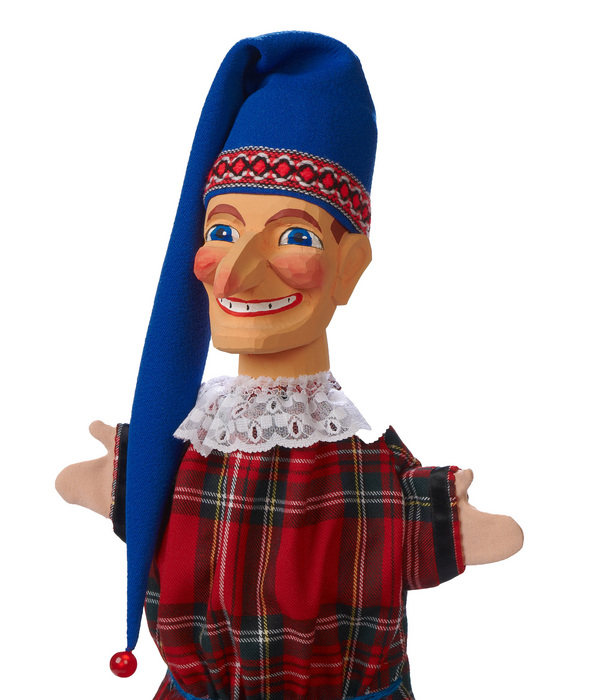
The puppeteer Max Jacob
Max Jacob was born on August 10 1888 in Bad Ems. After attending commercial school and training as an accountant, he came to hand puppetry through the Wandervogel movement. 1920 the Wandervogelkanzlei in Hartenstein was his place of work. There he played 1921 his first Punch for his birthday guests. A play troupe soon emerged that was becoming increasingly popular in Germany. 1928 Max Jacob and his colleagues moved to the largest youth castle in Germany in Hohnstein. The hostel manager Konrad Hahnewald (1888-1962) encouraged the group to do so. Every year 30 performances should take place for the castle, all other income belonged to the troupe. From then on, Hohnstein became a focus of puppetry in Germany. The talented ensemble was able to give the game an educational claim and to establish the puppet theater as an independent art form. Weekly courses were soon taking place, because the doll workshop needed assistants to carry out all the doll orders. The Hohnsteiner Kasperspiele grew into a considerable economic factor for Hohnstein.
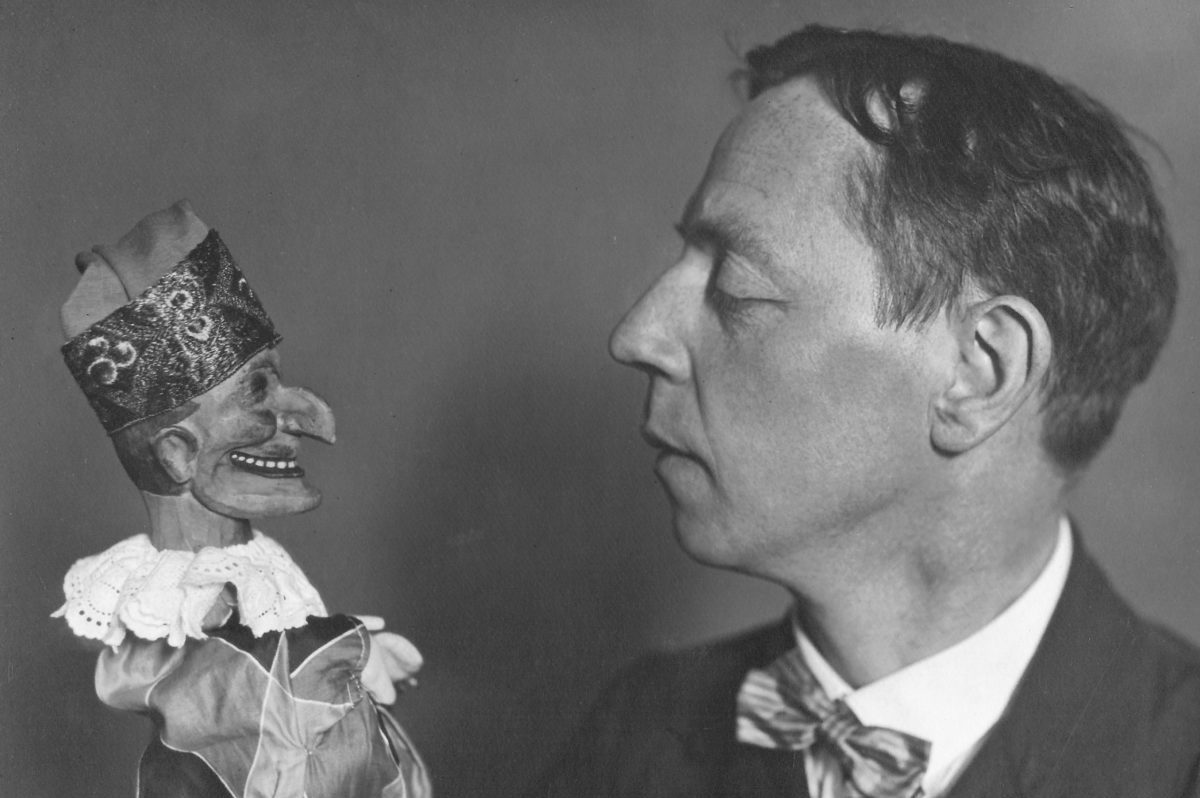
When the National Socialists seized power 1933 , Hohnstein Castle became a protective custody camp. Max Jacob and his colleagues had to leave their place of work. The city of Hohnstein then built a house for the puppeteers, the Punch and Judy . The awareness of the Hohnsteiner continued to grow. International guest performances and radio recordings followed. Some texts of the puppet shows appeared in print form. 1936 the Hohnsteiner were invited to the world exhibition in Paris for the Olympics of the best European hand puppeteers. 1937 they played there again and were awarded a gold medal. The success of the puppet theater continued during the Nazi era. Nevertheless, 1940 some of the players were drafted and the rest were obliged to entertain the troops.
After the end of the war 1945 the Hohnsteiner Puppenbühne played in prison camps around Hamburg and Kiel. Hamburg circles called on the Hohnsteiner to settle down there. Max Jacob decided on a fresh start in the north . His wife Marie, the carver Eggink and the costume designer Grünwaldt stayed at the Hohnstein Kasperhaus. Max Jacob stopped active puppetry 1953 , but he continued to take part in specialist conferences and courses. 1956 Jacob received the Cross of Merit First Class of the Order of Merit of the Federal Republic of Germany and 1957 he became President of the International Puppeteers Association UNIMA elected. 1967 Max Jacob died in Hamburg. His grave is in the small Hohnstein cemetery right next to the Hohnstein puppet theater. His wife Marie and his colleagues Theo Eggink and Elisabeth Grünwaldt also rest there.
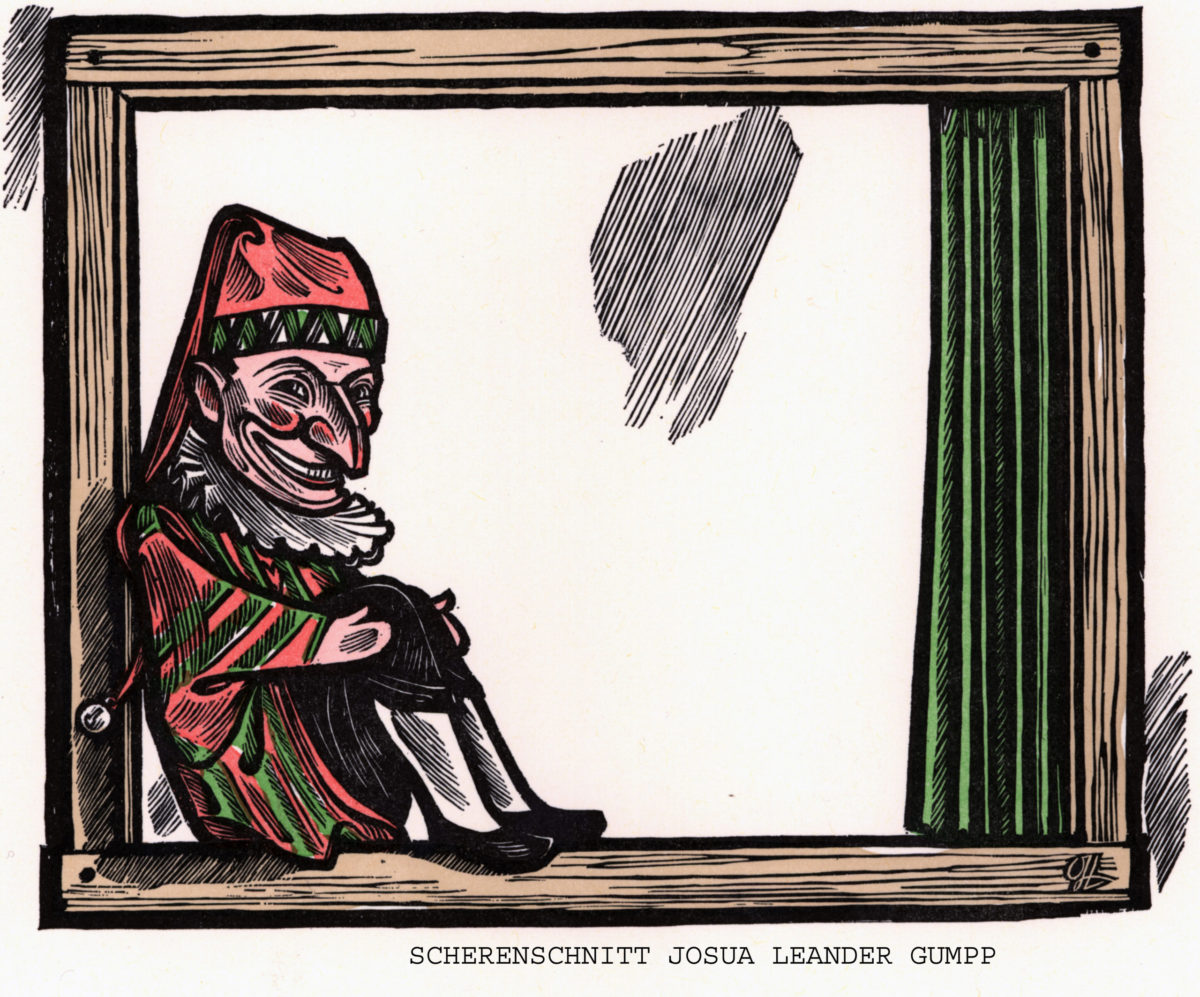
You can find me there today!
